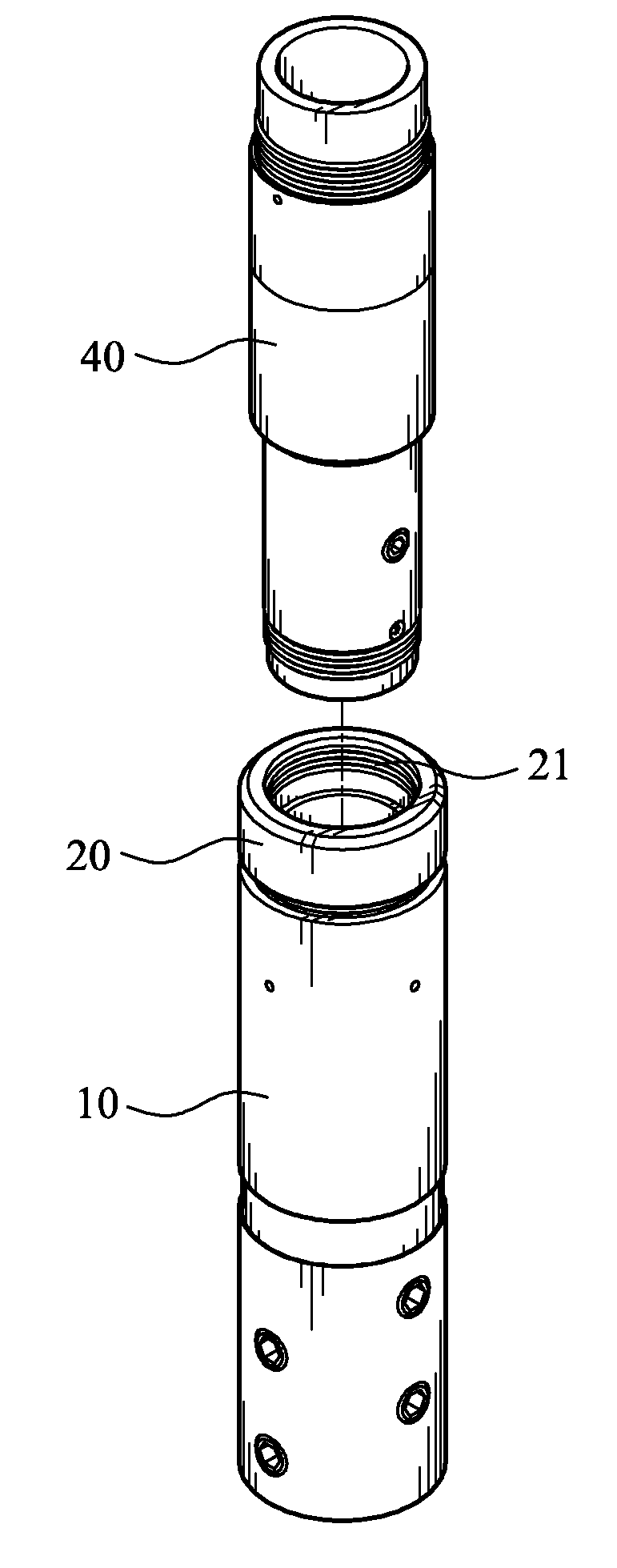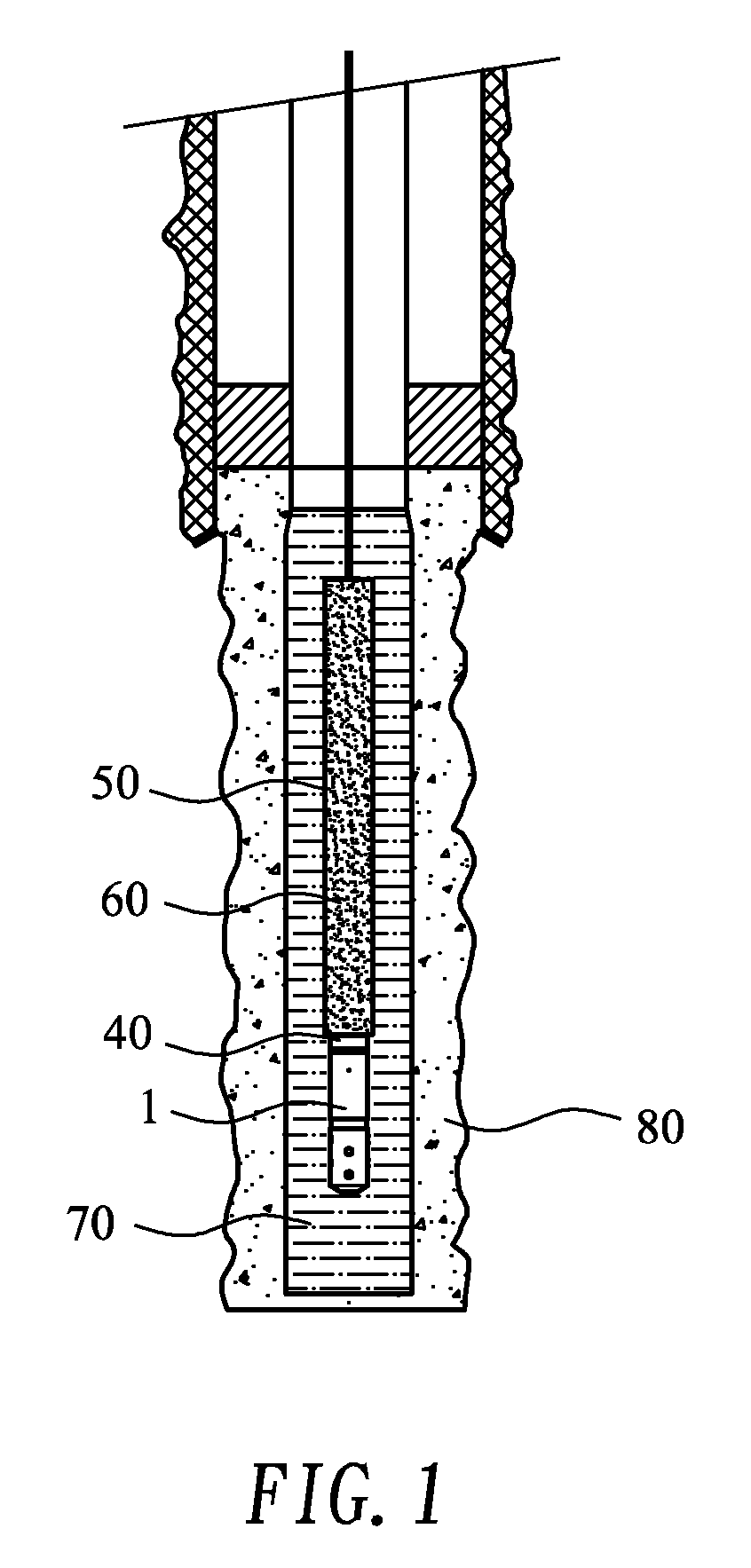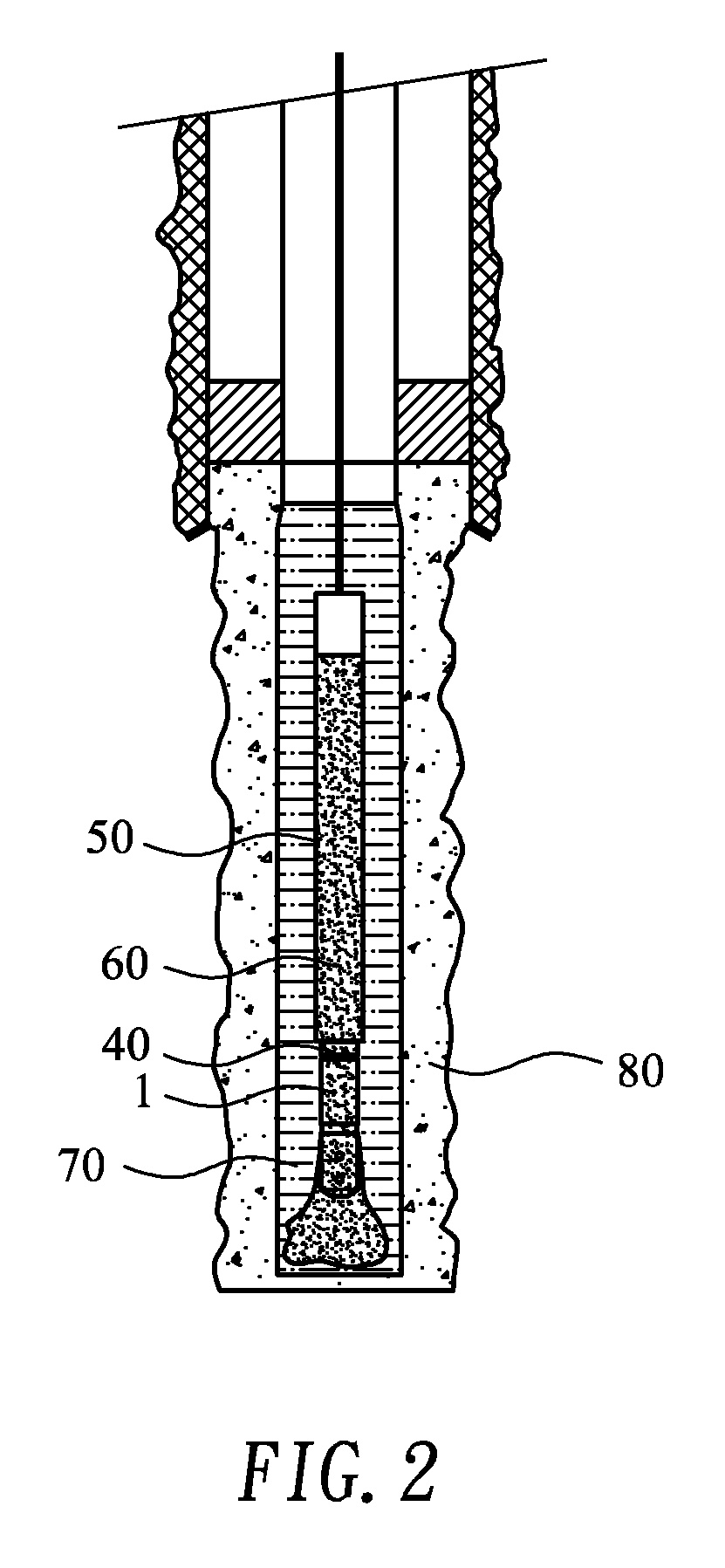Throttle unit for dump bailer and method of blocking a water out zone in a production well utilizing the same
a technology of a well and a throttle unit, which is applied in the direction of flow control without auxiliaries, instruments, borehole/well accessories, etc., can solve the problems of poor cement bond at the well casing, adversely affecting the production at other zones, and conventional bridge plugs can only be mounted in the screen pipe, etc., to achieve good water blocking effect and facilitate complete curing
- Summary
- Abstract
- Description
- Claims
- Application Information
AI Technical Summary
Benefits of technology
Problems solved by technology
Method used
Image
Examples
example 1
[0035]Use a dump bailer having an outer diameter of 1.52″ and an inner diameter of 1.456″. Keep the dump bailer still for 12 seconds. Three metric liters of cement is released at a flow rate of 1 liter / 4 seconds. A volume expansion rate of 18% is observed.
example 2
[0036]Use a dump bailer having an outer diameter of 1.52″ and an inner diameter of 1.456″. Keep the dump bailer still for 20 seconds. Three metric liters of cement is released at a flow rate of 1 liter / 6.67 seconds. A volume expansion rate of 14% is observed.
[0037]From the above examples, it is observed when the cement milk is slowly release data lower flow rate, the dilution extent of the cement milk is largely improved and the volume expansion rate of the cement is reduced, enabling the cement to have increased density and pressure resistance to ensure effective water blocking.
[0038]The present invention also provides a throttle unit 1 for connecting to a dump bailer 50 used in blocking a water out zone in a production well, so as to control a flow rate at which a predetermined water-blocking fluid in the dump bailer 50 is released via the throttle unit 1. Please refer to FIG. 5 that is an exploded perspective view of the throttle unit 1, and to FIGS. 6 and 7 that are assembled ve...
PUM
 Login to View More
Login to View More Abstract
Description
Claims
Application Information
 Login to View More
Login to View More - R&D
- Intellectual Property
- Life Sciences
- Materials
- Tech Scout
- Unparalleled Data Quality
- Higher Quality Content
- 60% Fewer Hallucinations
Browse by: Latest US Patents, China's latest patents, Technical Efficacy Thesaurus, Application Domain, Technology Topic, Popular Technical Reports.
© 2025 PatSnap. All rights reserved.Legal|Privacy policy|Modern Slavery Act Transparency Statement|Sitemap|About US| Contact US: help@patsnap.com



